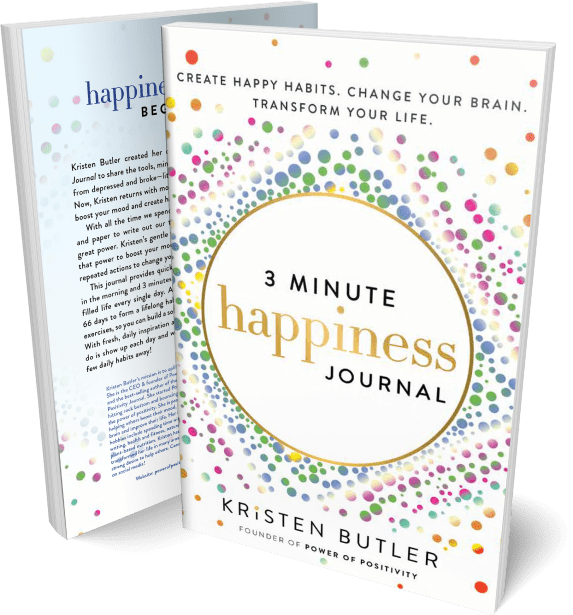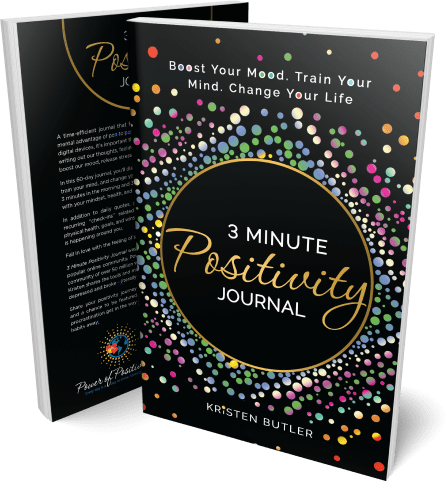Here are the secrets to a thriving, positive life.
In a world filled with challenges and uncertainties, attracting the power of positivity can transform your life. A positive mindset isn’t just about feeling good. In fact, it can increase your mental and physical health, help your relationships, and boost your overall well-being. This article will explore twenty ways you can harness the Power of Positivity in your life. You will discover twenty practical tips and insights to help you make lasting changes to achieve a lifetime of positive thinking.
Understanding the Power of Positivity
Positivity is more than just a passing moment of happiness. Rather, it’s a mindset that shapes how you view and interact with the world. Positive thinking can reduce stress, improve cardiovascular health, and, as a result, even increase your lifespan.
Dr. Richard J. Davidson, a neuroscientist at the University of Wisconsin Madison, says this about the power of positivity and its connection to brain health:
“Individuals who are able to savor positive emotions have lasting activation in the ventral striatum. The longer the activation lasts, the greater his or her feelings of well-being.”
When you focus on the good, you attract more good into your life, creating a cycle of positivity that feeds itself.
20 Tips to Attract the Power of Positivity
1 – Surround Yourself with Positive People
The people you spend time with greatly influence your thoughts and attitudes. Surrounding yourself with positive, supportive individuals can uplift your spirits and encourage you to adopt a more optimistic outlook. Positive people can encourage you during tough times and celebrate your successes. Thus, being around optimists boosts a positive mindset.
2 – Practice Gratitude Daily
Gratitude is a powerful tool for growing your positivity. By acknowledging and appreciating the good things in your life, you shift your focus from what you lack to what you have. See? Just like that, you’re doing positive thinking!
Start a daily gratitude journal. You can purchase my journal to follow my daily positivity-promoting exercises and prompts. Or, you can list three things you’re thankful for each day. Over time, this practice can train your brain to recognize and appreciate the positive things in your life.
3 – Set and Achieve Small Goals
Setting and achieving smaller goals can build confidence. It can also reinforce a positive mindset. Break down those larger tasks into manageable bites and celebrate each small victory. This approach makes big goals seem more attainable and provides regular positive boosts as you progress.
4 – Engage in Physical Activity
Physical activity is good for your body and your mind – and for inviting the power of positivity into your live. Exercise releases endorphins, our body’s natural mood lifters. Incorporating regular physical activity into your routine, whether it’s a brisk walk, a yoga session, or a gym workout, can significantly enhance your positive thinking.
5 – Meditate and Practice Mindfulness
Meditation and mindfulness practices help you stay present and reduce stress. By focusing on the present moment and observing your thoughts without judging yourself, you can cultivate a sense of calm and positivity. Start with a few minutes each day and gradually increase the duration as you become more comfortable with the practice.
6 – Engage in Positive Self-Talk
How you talk to yourself has a tremendous impact on your mindset. Negative self-talk can undermine your positive thinking and foster a pessimistic outlook. Practice positive self-talk by replacing negative vibes with affirming and supportive statements. Over time, this practice can help rewire your brain to focus on the positive.
7 – Limit Exposure to Negative Media
Constant exposure to negative news on TV or in online media can affect your mood and thoughts. While staying informed is essential, managing your media consumption is equally crucial. Set boundaries for your time on news websites and social media. Additionally, seek positive and uplifting content to balance the negativity. Spend more time on uplifting podcasts or learning something new and less time on the 24-hour news cycle.
8 – Reconnect With Your Innermost Creativity
Doing your favorite creative activities can be an excellent way to boost your positivity. Creativity allows you to express yourself and can provide a sense of accomplishment and joy. It doesn’t matter if you prefer painting, writing, playing music, or any other creative outlet. The key here is to find something you enjoy and make time for it regularly.
9 – Use the Power of Positivity to Help Others
Acts of kindness and compassion benefit others and enhance one’s well-being. Helping someone in need, offering a kind word, or simply being there for a friend can create a sense of connection and positivity. These small acts can make a big difference in one’s outlook on life.
10 – Cultivate a Healthy Lifestyle
A healthy lifestyle supports a positive mindset. Ensure you’re eating a balanced diet, getting enough sleep, and caring for your physical health. When your body is well-nourished and rested, your mind is more likely to stay positive. Simple changes in your daily habits can profoundly impact your overall well-being.

11 – Find Your Purpose
Having a sense of purpose can strongly encourage the power of positivity to enter your life. Purpose gives your life direction and meaning. As a result, it helps you stay motivated and focused. Reflect on what you’re passionate about and want to achieve. Pursue activities and goals that support your values and bring you fulfillment.
12 – Build Resilience
Resilience is the ability to bounce back after setbacks and challenges. Developing resilience can help you maintain a positive mindset even during difficult times. Practice resilience by shifting how you think of challenges. Instead, view them as opportunities for growth, staying flexible, and seeking support when needed. Resilience can be built over time through consistent effort and a positive attitude.
13 – Focus on Solutions, Not Problems
Shifting your focus from problems to solutions can enhance your positivity. When faced with a challenge, try to identify potential solutions rather than dwelling on the problem. This proactive approach helps you overcome obstacles and fosters a sense of empowerment and positivity.
14 – Embrace Change and Adaptability
Change is inevitable. So, learning to embrace it can lead to a more positive outlook. Instead of fearing change, view it as an opportunity for growth and new experiences. Adaptability and openness to change can help you navigate life’s uncertainties with a positive mindset.
15 – Write in a Journal Every Day
Journaling is a powerful way to have mental clarity and positivity. You can gain deeper insights into your feelings and behavioral patterns by writing down your thoughts, feelings, and experiences. A positivity journal, where you focus on positive experiences and reflections, can help reinforce a positive mindset and provide a source of encouragement during tough times.
16 – Practice Deep Breathing to Unleash the Power of Positivity
Deep breathing exercises can lower your stress levels and help you relax. When you feel better, you are supporting positivity.
Simple techniques like diaphragmatic breathing or the 4-7-8 method can be practiced anywhere and only take a few minutes. Regular deep breathing can help calm your mind and enhance your well-being.
17 – Laugh Often
Laughter truly is the best medicine. It releases endorphins, reduces stress, and fosters a sense of connection with others. Find ways to incorporate more laughter into your life, whether through watching comedies, spending time with funny friends, or simply allowing yourself to see the humor in everyday situations.
18 – Stay Connected with Nature to Increase Positive Thinking
Spending time outdoors has numerous mental health benefits, including reducing stress and uplifting your mood. Whether you take a walk in the park, a hike in the mountains, or simply sit and admire your garden, connect regularly with nature. The natural world can provide peace and positivity that is hard to find elsewhere.
19 – Learn to Forgive
Holding onto grudges and resentment can weigh you down and hinder your positivity. Learning to forgive, whether it’s others or yourself, can free you from negative emotions and promote inner peace. Forgiveness doesn’t mean forgetting or excusing wrongs; it’s about letting go of the anger and finding a way to move forward with a lighter heart.
20 – Seek Professional Help When Needed
Despite our best efforts, we sometimes need additional support to cultivate positivity. Therapy can provide invaluable tools and strategies for managing negative thoughts and cultivating a more positive mindset. Don’t hesitate to reach out for help when you need it.
Final Thoughts on Reaping the Rewards of the Power of Positivity
Attracting the power of positivity is the journey of a lifetime. Yes, it requires effort and commitment. However, you will undoubtedly learn that the rewards are immense. When you incorporate these practices into your daily life, you can create a positive mindset that enhances your general well-being and helps you navigate life’s challenges with grace and resilience.
Remember that positivity is not about ignoring the negatives. Instead, it is all about finding the good in every situation and focusing on what you can control. Start today and experience the transformative effects of positivity in your life. Shine on!




















